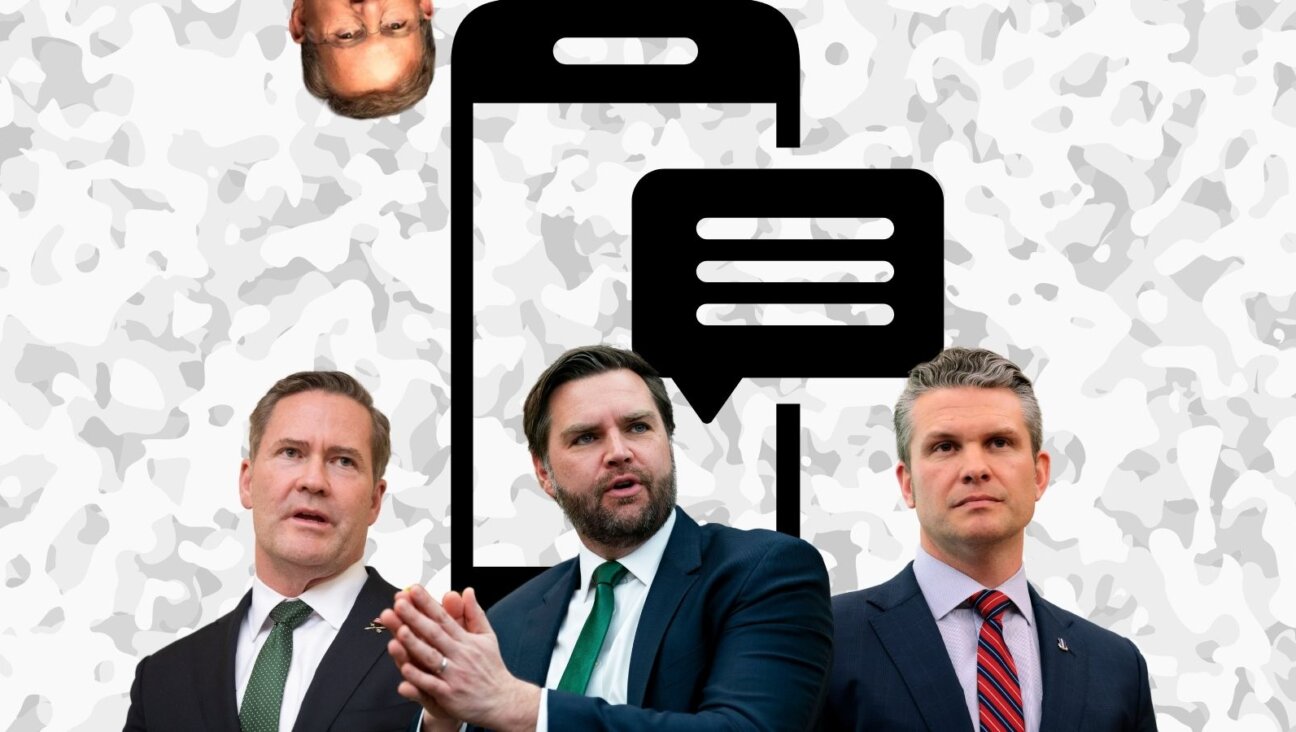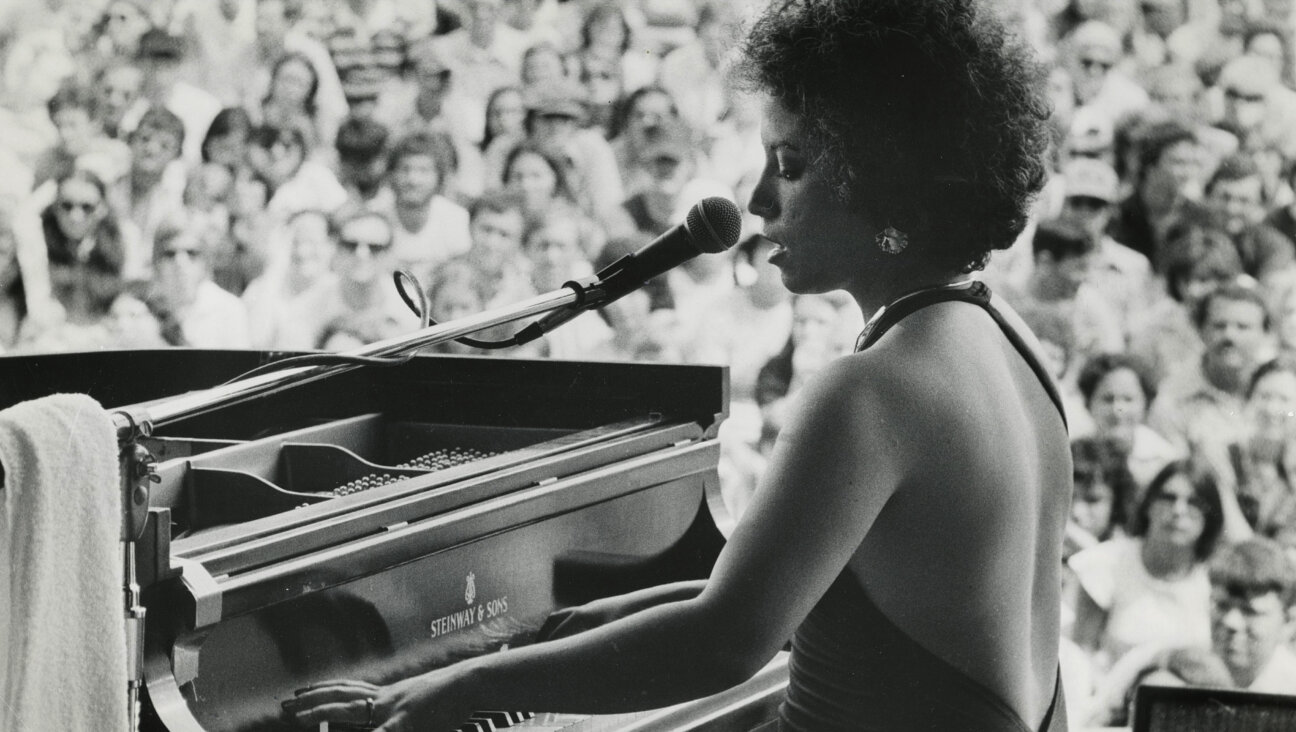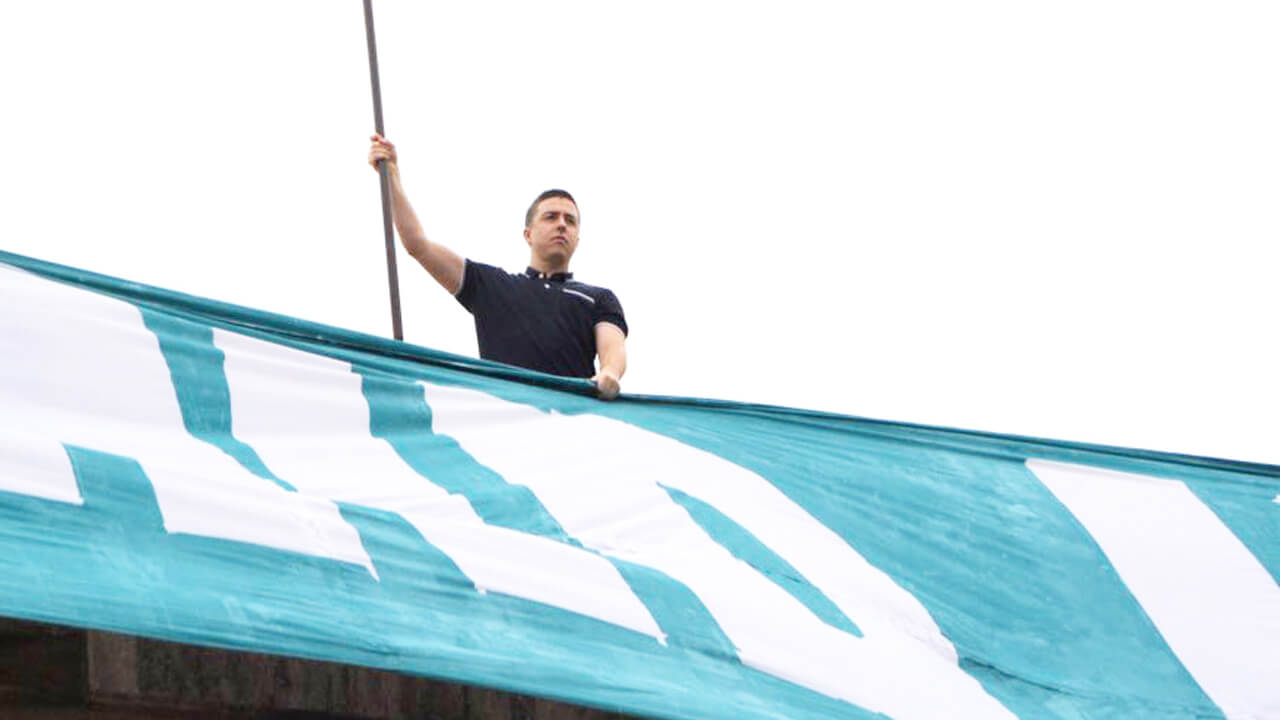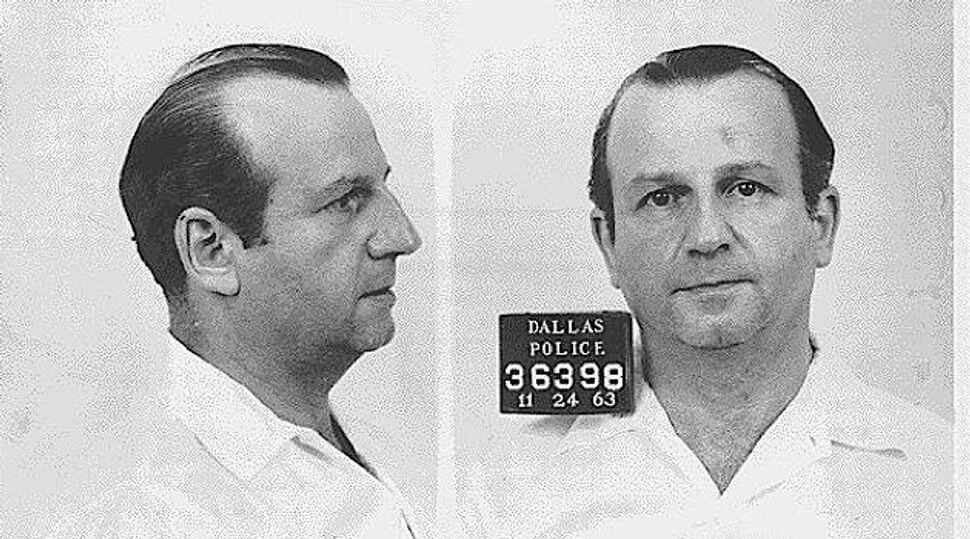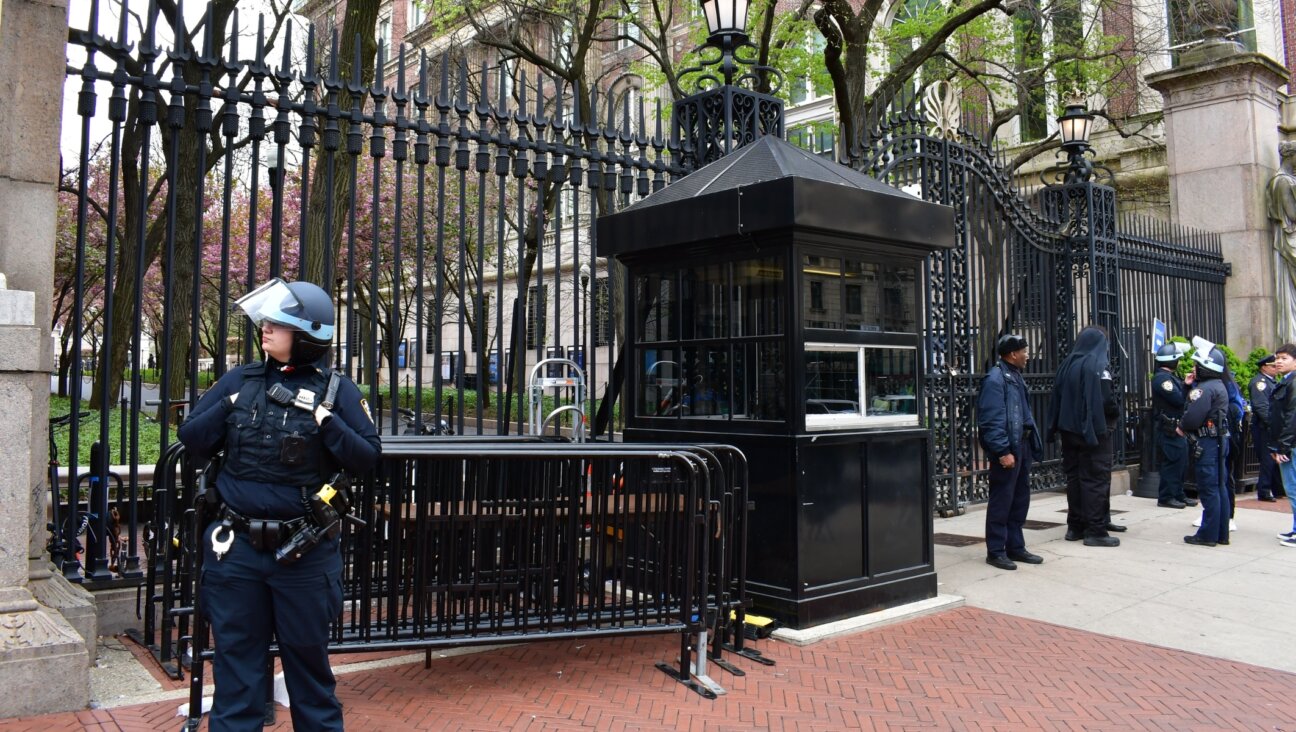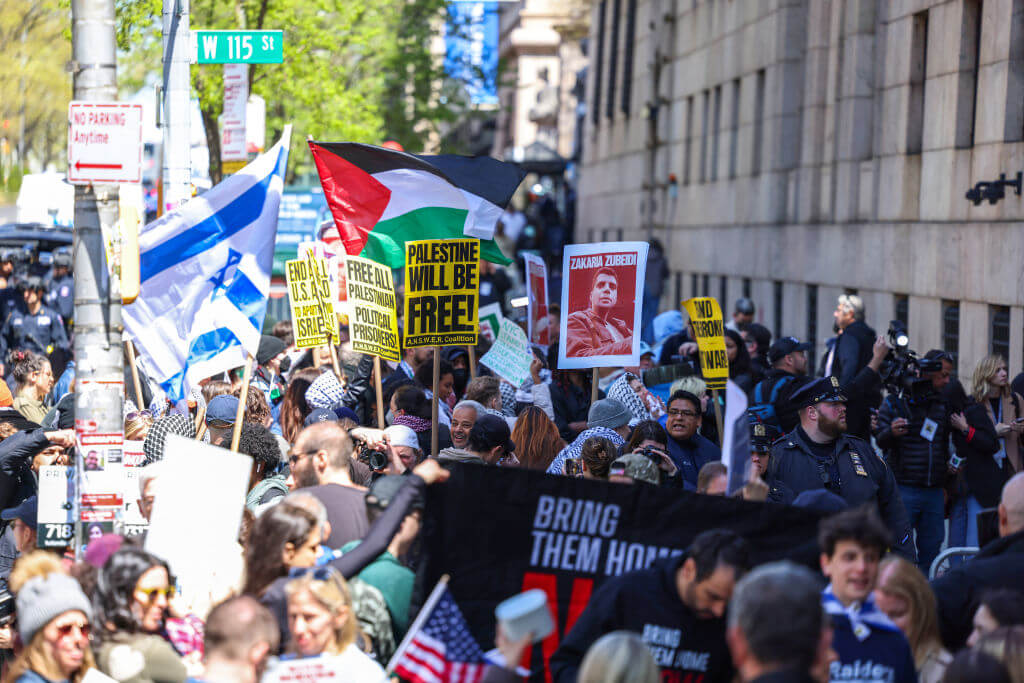How The Fearless Adventurer Ruth Gruber Joined My Writing Group

Witty in Pink: Ruth Gruber with the members of Susan Shapiro’s writing workshop. Image by Courtesy of Susan Shapiro
My friend Ruth Gruber, who recently died late last year at age 105, was born before women could vote and lived long enough to cast her lot with Hillary. Reading her extraordinary obituary, I thought: she never got to see an American female president. Yet she did get the last word.
We met in 1987, when she was dining with an editor I knew. “Ruth, this is Sue, who just reviewed your book for The New York Times,” my colleague told her.
A tiny blonde-haired 77-year-old in a turquoise skirt outfit, silver jewelry and rainbow scarf, Ruth looked up at me, terrified. My short piece on her memoir “Rescue” — my first Book Review assignment — hadn’t yet run. I was a tall, struggling 26-year-old Manhattan critic in black jeans, a Gap sweater and cowboy boots. I was stunned that The Times had hired me for anything, let alone to critique the new project of a trail-blazing political activist. What was the protocol when you bumped into an author you’d filed a review on?
“I loved your book. Total rave!” I blurted out.
Her blue eyes beamed as she hugged me. Not a bad way to meet a mentor.

Witty in Pink: Ruth Gruber with the members of Susan Shapiro’s writing workshop. Image by Courtesy of Susan Shapiro
After my review ran, Ruth invited me to her Central Park West apartment. She gave me a signed copy of her earlier memoir “Haven,” about how she undertook a dangerous secret mission for President Roosevelt to escort a thousand Jewish refugees escaping Nazi Europe. An autographed photo with President Truman hung on her wall, alongside pictures of her with Eleanor, Golda, Mario, Bill and Hillary. I wanted to know about her books on the Soviet Arctic, Vietnam, and Korea, based on her travels as a foreign correspondent for The New York Herald Tribune. I asked about “Rescue” where, at 74, she’d been the sole journalist on the 1985 secret airlift of Ethiopian Jews to Israel.
Without answering, she fired off questions about the writing workshop I’d mentioned in passing.
“Where does your group meet? Do you do nonfiction? How much work can a writer bring in each week? Do you give out pages in advance or read aloud?” For a paranoid moment, I feared she knew I was an impostor who lacked credentials to judge her book and was gathering proof to confront the editor with their blunder. “I want to join your workshop,” she concluded. “I just started a new memoir I need feedback on.”
“Ruth, you’ve been doing this half a century, with a dozen hardcovers out. You’re too advanced. Don’t you have an agent and editor you listen to?”
“They say everything I hand in is great,” she said. “Who needs sycophants? I want criticism.” When she learned a few members also had books out, she said, “I’m coming.” No was not a possibility.
“Maybe try sitting in once first? It’s intense,” I warned. “Our worst insult is ‘There’s no blood here.’ You know the cliché ‘kill your babies?’ If you’re being precious or too in love with your words, a member will say, ‘Bang bang, take ‘em out of their misery.’”
“Good, I like blood and want my babies killed!” she said. “See you Tuesday.”
I worried the motley crew of poets and critics (ages 15 to 45) assembled in my Greenwich Village studio wouldn’t get her gung-ho, Jewish nationalistic prose. It was a bit purple even for me, a left-wing Jew more literary than political. But Ruth, who cultivated friends of all ages and backgrounds, couldn’t be deterred from shlepping downtown. “What’s the dress code?” she asked.
“Torn jeans, sweats, overalls and sneakers,” I said. “We sit on the floor, with beer and popcorn.”
She showed up in a green silk dress, cashmere coat, antique brooch and heels, made-up with beauty parlor hair. Copies of her chapter were printed on continuous-form computer paper, tear-off hole punched strips on the sides. While we shared pages seated on K-mart chairs, the cheap pull-out couch, or cross-legged on wooden tiles, Ruth — barely five feet — stood to read aloud a scene from her memoir-in-progress, “Ahead of Time: The Extraordinary Journey of a Fearless Foreign Correspondent.” It was set in 1935 on a trip to Europe. After witnessing Hitler’s rise in Germany, she went to London to meet Virginia Woolf, the subject of the dissertation Ruth finished at 20 (later published as “The Will To Create As a Woman.”)
“The heroine’s too perfect,” said Roberta, a short story writer. “Subtitle’s self-congratulatory. ‘Fearless’ is too much.”
“Can we verify she’s the youngest Ph.D. in the world and finished the degree in Cologne?” asked Bob, the ex-con memoirist and in-house cynic.
“It’s true. I looked it up,” I said, tearing the hems off her paper, nervous Ruth would feel insulted.
“If it’s true, good story, but the family stuff is schmaltzy. Calling your Williamsburg hometown a shtetl is cliché,” decreed Gerry, a magazine journalist, perched on a side stool. “Unless it’s a Hallmark Special, every relative can’t adore each other.”
“Ditto. Too schmaltzy,” echoed Mike, a filmmaker. “Like Tolstoy said, all happy families are boring.”
“Too bad she can’t sleep with Johann the Nazi,” remarked Marilyn, a travel writer with a back injury lying flat on the futon.
I tried to read Ruth’s face, fearing our intrusive psychoanalytic and sexually frank bent upset her.
“She can’t sleep with the Nazi! It’s nonfiction!” Kashmiri poet Rafiq defended Ruth’s honor.
Ruth clarified: she actually was attracted to the German, though they’d barely kissed. Still, it was a shonda for a nice Jewish girl to fall for an enemy soldier, she said.
“Put it in there! Be honest!” urged Idra, a Spanish translator going to Columbia University.
“I don’t want it in there. It was a terrible mistake,” Ruth argued.
“We have a rule you can’t speak while you’re being critiqued,” said Tsipi, the Israeli novelist.
“Shame makes your narrator human,” I argued. “She’s acing her Ph.D. at 20, working for a major newspaper and meeting dignitaries at 25. Yet she still falls for the wrong guy.” A single journalist with an MA, good clips, and several psychotic exes, I could relate.
Ruth furiously scribbled notes, appearing increasingly smaller and fragile. I felt awful. First I’d raved about her book. Now my gang was beating up my fantasy grandma. The next morning my phone rang at eight a.m. I was a notorious night owl nobody ever called this early.
“Sue, it’s Ruth. I’ve been up all night,” she said.
“I’m so sorry,” I started to apologize for the way the workshop tore into her material.
“They were right. It’s too shmaltzy! I added specifics and dialogue to flesh it out,” she told me. “I’m bringing the revision next week.
For the following 15 years, Ruth came to the workshop whenever she was in town, often with fresh pages. After the group advised her to tone down hyperbolic adjectives describing herself as “fearless,” extraordinary” and “the greatest,” she’d delete, then months later slip the words back in. Despite our urging, anything negative from her past (family discord, a failed relationship) she’d skip over or omit completely.
While not comfortable confessionally, she was the most sartorially inspired: she wore satin A-lines, pastel skirt ensembles, a cape with more colors than Joseph’s dream coat. She swore she was fine taking the subway alone, but Gerry, Mike and Rafiq accompanied her into the shared taxi “the Upper West Side express.” One offered his arm to lean on while another opened the door. They never let her pay. “I always make younger friends. It keeps me up-to-date and sharper,” she told me, insisting you could be a feminist who was also feminine and loved men and marriage.
Meanwhile the memoir she workshopped, “Ahead of Time: My Early Years As a Foreign Correspondent,” published in 1991 by Wynwood Press, earned the best reviews she’d ever received. At her fancy uptown launch party, we celebrated with a group hora. She was widowed but not lonely. I met her two children, Celia and David, her step-kids, grandkids, adoring fans and refugees I’d read about in “Haven” and seen versions of in the TV mini-series, with Natasha Richardson playing a compassionate Ruth.
Her empathy extended to my career. When I was hurt that my indie press poetry volume was ignored by reviewers, she surprised me by writing a Hadassah Magazine rave, saying my verse showed “wit and wisdom.” I was touched she championed my work, years after I’d praised hers. She introduced me as “brilliant” to her agents and editors, encouraging me to launch my own memoirs. At this point, it hadn’t occurred to me to try, or that one could publish multiple autobiographies. After I began teaching at 33, Ruth invited me — and my students — over. She served bagels and cream cheese, offering a tour of her apartment and travails, seeming more my pal than a woman in her eighties. Until she offered unsolicited advice.
“Listen,” Ruth said, taking my hand one day. “You’re a good-looking girl, but lose the jeans, sneakers and dark colors. Men don’t like shlumps. Maybe that’s why you’re still single.”
I rolled my eyes. I’d heard the same sort of remark from my family – with whom she hit it off at my casual boho wedding. “You look beautiful — except for that black dress,” Ruth said. She stayed in the group until it ended in 2003. At 92, she hosted a final workshop party at her place.
She was thrilled when I sold my first memoir at 41. Yet ironically interviewing Ruth for a sequel on my trusted gurus, “Lies My Mentors Told Me,” caused our first quarrel.
“What a terrible title!” she commented. “You must do better.”
Former workshoppers felt forever authorized to trash you, even when you didn’t ask their opinion. “You’re an author. You know subjects don’t get title approval for someone else’s book,” I reminded her.
“I won’t be in a book about liars,” she emailed in the huge computer type she’d taken to using.
“It’s not about liars. It’s a play off of the title ‘Lies My Father Told Me,’” I responded.
“I’m not in love with your title either,” my editor admitted.
As a concession to Ruth, it was renamed “Only As Good As Your Word.” Then Ruth hounded me to excise stories she’d shared yet changed her mind about. “You didn’t say off the record,” I said, reminding her of journalistic protocol. I explained that my chapter about her was laudatory and that I couldn’t delete long passages after the book had gone to press, let alone allow her to revise the chapter on herself. She was angry I didn’t acquiesce; I was hurt she didn’t trust me. We lost contact for a while.
I was relieved she’d forgotten our tiff when I received an invitation to an event celebrating her 100th birthday, with a talk about her 19th book “Witness: One of the Greatest Correspondents of The Twentieth Century Tells Her Story.” It had a forward by Richard Holbrooke and 190 poignant photographs she’d taken of refugees she’d met around the globe. The cover was a picture of her behind a camera in Alaska in 1941. On line to get her signature, she gestured for me to come closer. I thought she’d thank me for buying so many copies. Instead she whispered, “Did you get rid of all that crap I hated in your memoir?” I couldn’t help but laugh.
As a journalism professor in midlife, I took to wearing nicer tops and skirts with silver jewelry and publishing editorials railing against the scary scourge of anti-Semitism. I hung out with kids from my classes, forgetting I was decades their senior. I often shared Ruthisms: —you’re never too old to ask for criticism or too acclaimed to take it. No never means no. Make younger friends. And most important: choose your own descriptions, titles, covers, and photographs to control your legacy.
Indeed, I noticed the documentary about Ruth, “Ahead of Time: The Extraordinary Journey of Ruth Gruber,” and her New York Times obit, “A Fearless Chronicler of the Jewish Struggle,” used the exact adjectives and phrases Ruth had written about herself, along with photos she’d provided. Anything she’d erased from her bio remained absent. She was ahead of her time. Decades before blogs, Facebook, Instagram, and selfies, she’d made — and curated — her own history.
Susan Shapiro is the NY Times bestselling author/coauthor of “Unhooked,” “The Bosnia List,” & the novel “What’s Never Said.” Random House will reissue her memoir “Five Men Who Broke My Heart” as an e-book in April. Follow her on Twitter at @susanshapironet
The Forward is free to read but not free to produce

I hope you appreciated this article. Before you go, I’d like to ask you to please support the Forward.
At a time when other newsrooms are closing or cutting back, the Forward has removed its paywall and invested additional resources to report on the ground from Israel and around the U.S. on the impact of the war, rising antisemitism and polarized discourse.
Readers like you make it all possible. We’ve started our Passover Fundraising Drive, and we need 1,800 readers like you to step up to support the Forward by April 21. Members of the Forward board are even matching the first 1,000 gifts, up to $70,000.
This is a great time to support independent Jewish journalism, because every dollar goes twice as far.
— Rachel Fishman Feddersen, Publisher and CEO







